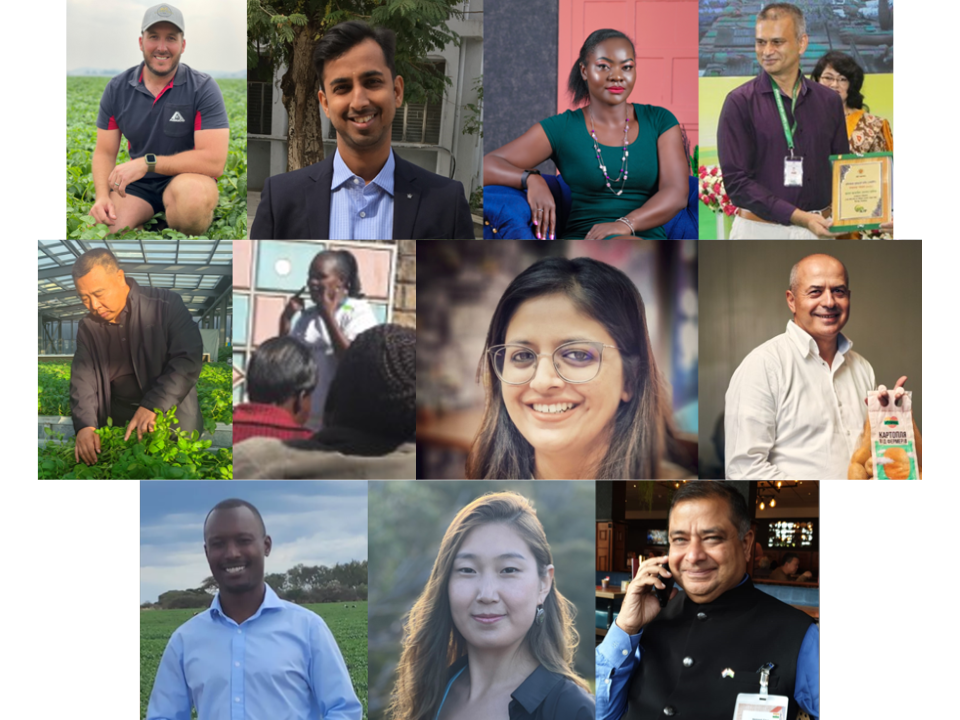Pragmatic solution to food systems transformation

Pragmatic solution to food systems transformation
Passionate people conquering challenges in dynamic markets
Michel de Bruin drives Agrico’s expansion in emerging markets and leads global partnerships for food systems transformation. He plays a key role in regions such as Kenya, Tanzania, Ukraine, China, and India. All markets that are part of the geopolitical powerplay as explained earlier by Rob de Wijk. Michel’s understanding of local contexts and the difference that passionate people can make, has been instrumental in driving the success of these initiatives. As a practical food systems expert, he brought a unique blend of experience and passion for emerging markets to our symposium.
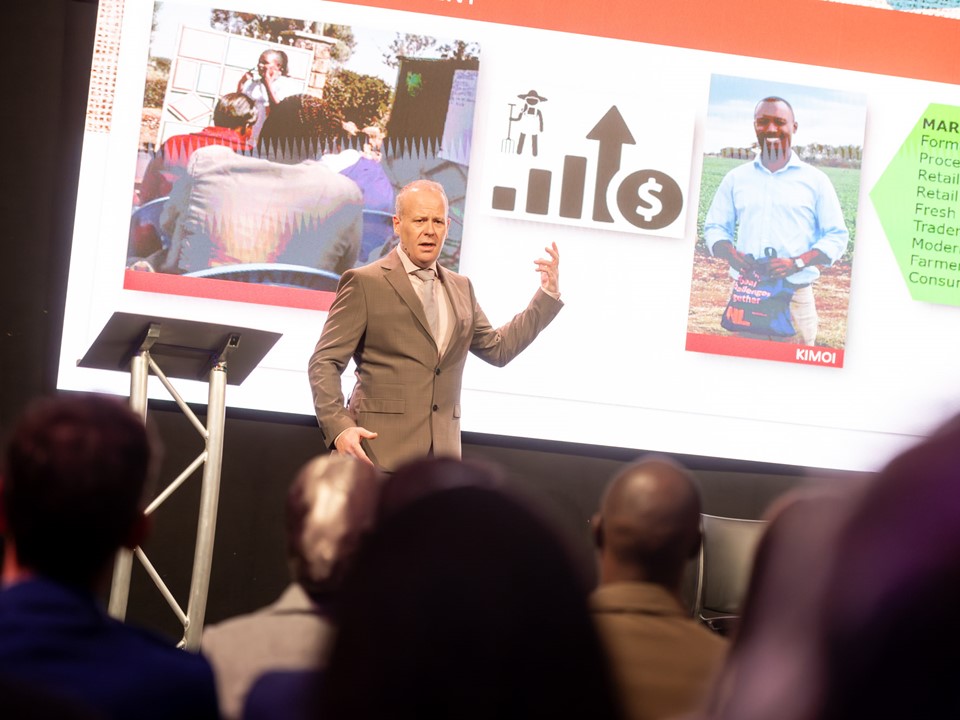
Achieving an impact requires large volume & food systems transformation
Okay, so now you've heard about food systems, you've heard about geopolitics and you've heard about finance. I've got the easy part: to explain how to start up and how to scale up, in an emerging market, in 15 minutes. So here we go. To start with: small-scale pilots/trials – despite their charm - do not make any true impact. Realizing policy goals – such as food security, farmer income increase, etc. - requires large volumes of potatoes. And it requires the transformation of a food system.
3 pillars in a food system: enabling environment, market & production
In Agrico’s vision, a food system consists of three main pillars: enabling environment, market, and production. Each pillar consists of different elements, and these elements are not always visible, but they are connected. It also means if you try to transform the system by just pushing one of these single buttons, the system’s ecosystem pushes back. You need a holistic approach. You need to see the total picture.
Production smallest challenge in transformation: proven technology
Let’s assume Mr. de Wijk’s appeal for pursuing strategic dependencies was successful and as a result this first pillar – enabling environment – is somewhat doable. That leaves the two other pillars. Let’s start with seed and ware potato production. When we enter a market, as Agrico we always use a production system that has proven its added value. The potato production system differs from country to country, but it is always an existing system that works. You could see this as proven hardware. Next, we also choose to produce potato varieties that are proven. Meaning varieties that are high-yielding and result in high profitability for farmers. We have these varieties available, off the shelf, and they can be used immediately. You could see this as proven software. We don’t experiment, not with unproven varieties, not with unproven production systems. We go for proven technology. Our proven technology approach, hardware and software, creates an impact within a short period. It works everywhere. It results in high volumes, profitable business cases for all stakeholders and within a short period. Technically transforming a food system is thus our smallest challenge.
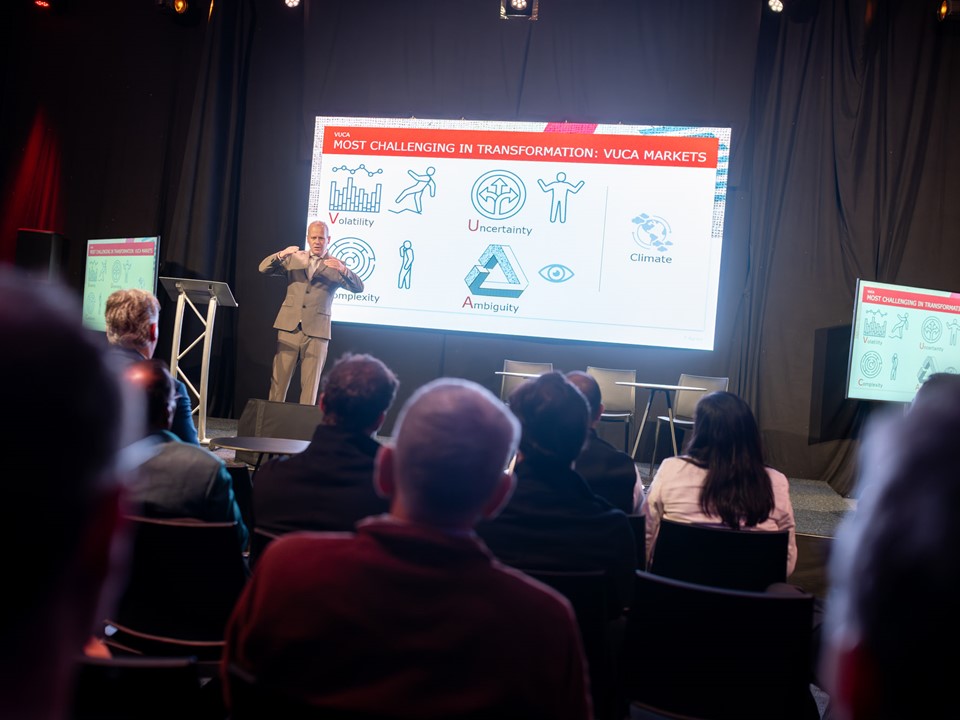
Biggest challenge: VUCA market
In our case, the biggest challenge in food systems transformation is the market, emerging markets. We consider these to be VUCA markets, with a high level of Volatility, Uncertainty, Complexity, and Ambiguity. Climate change increases VUCA in these markets.
Let me give you some examples of what VUCA means in practice. In India, a few years ago, the government decided overnight that many rupee bills would become invalid. In these markets, the majority of the farmers don’t have a bank account. They only have cash money and overnight more than 80 percent of their money had no value. Well, how do you deal with a situation where 80 percent of your customers no longer have money? Team India fixed it. Another example is Zimbabwe. Double-digit, triple-digit inflation rates. You need access to foreign exchange, but you can’t get it. However, you need it for investment in equipment, input material, etc. Team Zimbabwe manages the problem. Finally, the country that is in VUCA pole position. In the country where, if you want to plant in the morning, you have to de-mine your field first. In the afternoon, when you want to harvest, you have to dive because rockets from the Kremlin are flying over. In the evening, when you go to your cold store with your freshly harvested potatoes, a Russian tank battalion is wiped out in front of your door. Team Ukraine heroically manages.
Potato market: food systems transformation is slow
Let’s now step into the most beautiful market, the potato market. And I’ll reveal a secret to you: a potato ≠ an Apple. Meaning in our case, if we’ve got a new potato variety, you don’t see screaming teams, you don’t hear consumers shouting “we want this latest variety”, like you have with a new iPhone release. The potato sector is ‘slightly more conservative’. Our potato food system transformation is slow.
There are different parts in the potato value chain. Its starts with our development of a new potato variety. Its production starts from the laboratory, then to simplify this, it becomes seeds, in different generations, ultimately leading to a seed variety generation that is of top quality and affordable for farmers. They use it, they produce table and ware potatoes, raw materials for the processing industry. And finally, via various retail channels consumers buy the potato products.
Bart explained earlier nobody is controlling the food system. Trying to innovate something in such an ‘uncontrolled’ system is a challenge. It takes time, it requires trust and faith of its actors. All the different parts in the chain have to gain faith in the added value the innovation can bring to them. And then the added value for the farmer is different to the added value for the trader, the processor, and so on. Moreover, it is complicated because all parts of the chain are connected to each other and interdependent. Delivering added value for the next part of the chain requires skills and commitment from the previous part of the chain. The other critical success factor in food systems change is faith. Faith that the next element of the chain is willing to take on the innovation for a reasonable price. Even by deploying proven technology – proven software and proven hardware – this takes time.
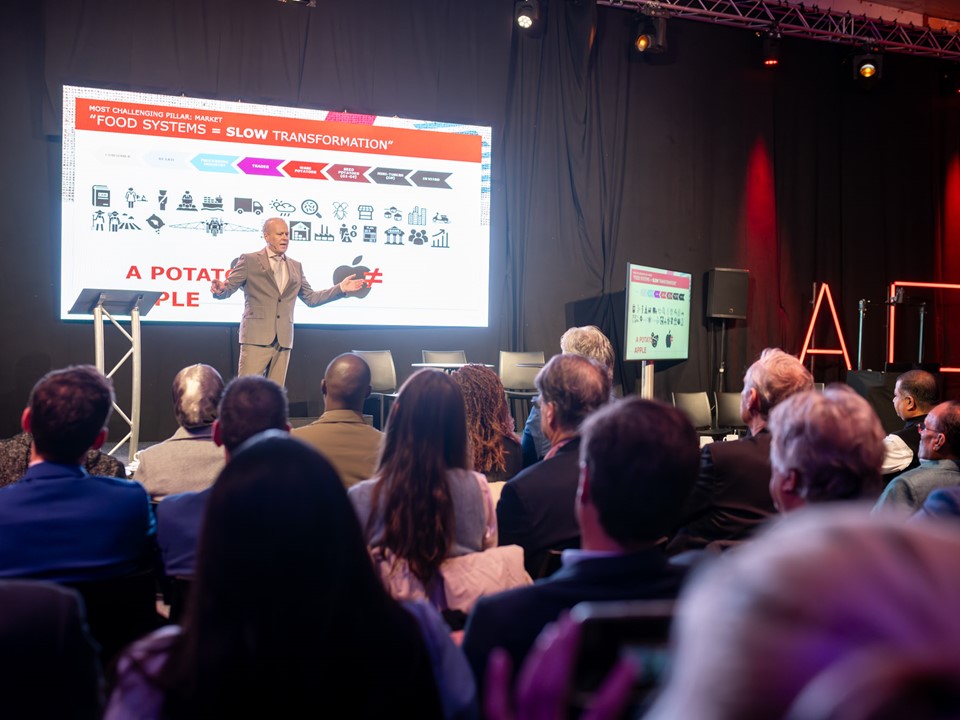
Transformation: changing habits and passionate people are key
If there’s trust and faith, then okay, actors may change, the system may transform. This shows that in our case, systems transformation may sound like technology, but it’s not at all a beta science. It’s changing peoples’ habits. It’s behavioral science. Also, to realize this change, you need early adopters to take you through, the ones who are skilled, the ones who are passionate. You may also call them slightly crazy. These are the types you need to go and organize the transformation.
Emerging markets: sizes and inefficiency complicate food systems transformation
These emerging markets are very large, size matters. If you were to lay India over Europe: India would start in Norway, carry on to Bordeaux, then to the desert of Tunisia, and then through Ukraine. They also have the Alps, they just call them the Himalayas. This is big and China? China is India plus parts of Russia and the UK.
Then to take you a bit further out of your comfort zone, there is a thing called distribution. Distribution in the Netherlands is very efficient. Last mile distribution in these countries is highly inefficient. And in these fragmented markets, with many small-scale potato producers, the majority of the production is distributed in this last mile… So yes, Bart is absolutely right when he says value chains in emerging markets are inefficient. You can imagine that large countries with inefficient value chains complicate food systems transformation.
Pragmatic approach: deploying our development framework
So, these markets are big, the opportunities are big, but so are the challenges. How do you do this in practice? This whole system is so dynamic, you can't use conventional forecasting systems. Such traditional management systems are linear and not equipped to handle this dynamic complexity. What you need is a non-linear way of thinking and you have to see the total picture.
For this, we created a development framework, consisting of eight development pillars: management development, business model development, market development, innovation development, operations development, partnership development, marketing communication development and finance development. Each of these pillars consists of various elements. Again, all of these elements are connected to each other, they are interdependent. We created this model in the Netherlands. For each country, along with our local teams, we define what is now the priority in this country. What are the big hurdles that make the difference? If you want to change, you've seen pushing change through such a system won't work. What we need to do is we have to remove the hurdles blocking change. With our local teams, we put our heads together. Okay, what is the main problem? What should we focus on? Based on that we prioritize and then we monitor, we steer, we learn and we keep on developing.
Management development
I will give you a few examples of elements of these development pillars. It's no coincidence that I have picked one from the management development pillar as the first one. It’s the most important part, because the management of the country is the foundation to transform local food systems. To give you some idea, let’s start with the Dutch perspective. In the Netherlands, you learn that if there's insecurity, you work with scenarios, let’s say ‘plus five percent minus 10 percent’. In Kenya's VUCA market, prices can be somewhere between KES 8 and KES 66. Then volume. Volume is also ‘slightly’ unpredictable. The majority of the farmers are smallholders - spread all over the country – with rain-fed potato production. This means they wait until it starts raining, they pick up the phone in the morning, they call Margaret - our Kenyan commerce and finance manager - and expect the seed potatoes to be delivered, on their doorstep, in the afternoon, so they can plant tomorrow. Then there's this climate change, complete changing raining patterns in Kenya. So you never know when it’ll start to rain. In summary there's a big fluctuation in price, and there's an even bigger fluctuation in demand and the timing of the demand is totally unpredictable. Price multiplied by volume = I don't have a clue. Passionate Margaret does. She manages distribution and cashflow. She does, because she's on top of everything. She's extremely flexible and meanwhile, she's trying to change the behavior of farmers, helping them to understand that they need to plan ahead.
Business model development
An example of business model development is China, the biggest potato producer in the world. Together with our partner Mr. Chin, we think about which business models will work in China. How do we make sure that our varieties are being adopted in China? That's not so easy because in China the markets are closed. It means you have to start your production, and your marketing from the laboratory all the way till the end. As I explained earlier, there are different parts in the chain and each part expects added value. It also means that you have to make a tailor-made marketing plan for each part of the chain, customized marketing mixes for each element in the chain. Then there's this slight challenge since our partner in China speaks Chinese fluently, and our Chinese is somewhat rusty. Trying to understand each other’s (business) culture where you don't understand each other is not so easy… Well that’s where Xuanyu comes in. She speaks Chinese, understands China, explains to us what is happening there, and also provides easy solutions. Together we create, we try, we may fail and we try again and we succeed.
Market development
Here’s an example of market development. In Kenya, together with our partners, we put the farmer at the center point of an ecosystem. We make sure that he gets access to affordable top-quality seed potatoes, crop nutrition, crop protection, access to knowledge, access to markets, access to finance, and access to technology. This ecosystem, we started and we continuously upscale. That's not so easy, you have to explain its added value to many stakeholders. For instance. We do this via our business case training to smallholders, performed here by Diana Gitonga from Bayer. In Kenya, the majority of potato farmers are financially illiterate. Just imagine what it is like to explain a business case to someone who doesn't know what cost, prices, what profit, etc. is. Diana explains this step by step, patiently and passionately.
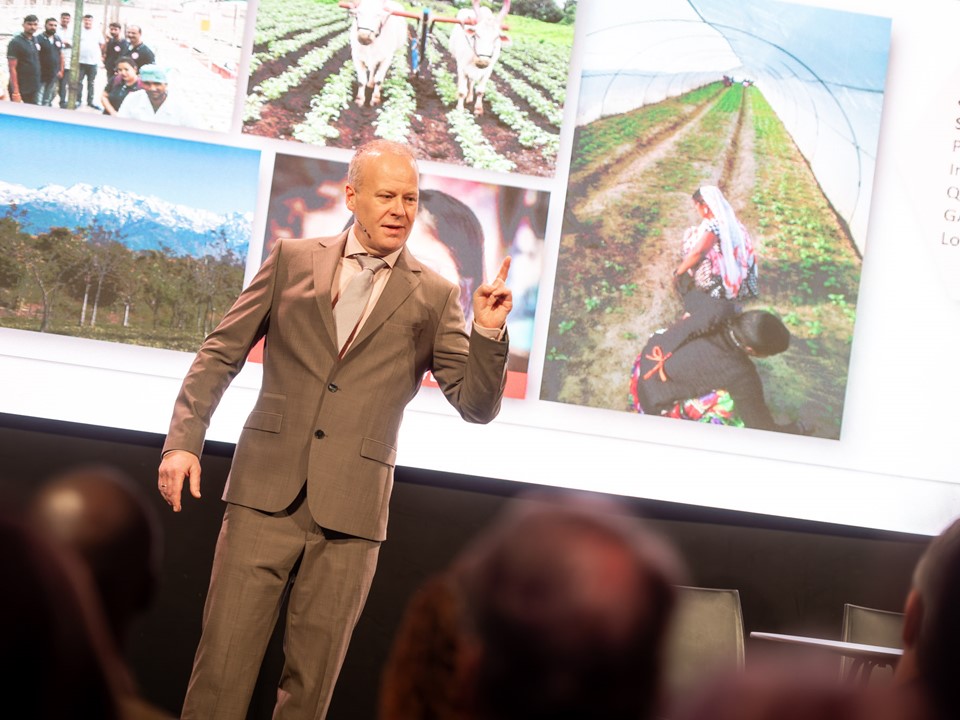
Marketing communication development
Very much connected to the previous point is marketing communication development. How to persuade farmers to deploy Good Agriculture Practices (GAP) and invest in these high-quality seed potatoes? We can't use the marketing material we have in the Netherlands. The message is different in Kenya. Our director Kimoi collaborates with all Kenyan potato processors, and helps them understand what the added value for them is. These processors then demand our specific variety. So our marketing messages to the farmer who wants to grow this variety and deploy GAP, became ‘you will gain access to two premium markets. The small potatoes you can sell to the crisps industry. The bigger ones are going to the chips industry. By adopting these practices and choosing this variety, you will get high volumes, high yields, and high prices’.
Partnership development
An example of how to develop partnerships: Ritesh is responsible for all partnerships in India and they are numerous. For each question I ask him, he knows the answer by heart. One of the questions I always ask: ‘how many farmers are included in this program’? Now there is this program in Bihar, a World Food Program. His answer to my question: some 970,000 farmers. However, knowing the Indian system with lakhs and crores, I thought ‘maybe I misunderstood this number’. I always triple-check numbers provided from India. So, I asked him: ‘are you sure it is 970,000 farmers, that's huge’? He was silent, then he said: ‘Michel, you're absolutely right. It's not 970,000, it's 9.7 million farmers...”. How do you manage partnerships with 9.7 million farmers? I don't know. Ritesh does. He's building bridges to traditionally unlikely partners and educating potato farmers all over India.
Operations development
Let's stay in India. Believe it or not when we transform food systems, we actually also produce potatoes. Richa is responsible for some seven production sites across India. Remember the last-mile distribution challenges raised earlier: it is problematic. For Richa, it's only 100 up to 2,000 kms from her home, not so far away according to her. Sometimes we encounter communication issues and she apologizes: ‘Michel, I can't hear you because I'm in the hills’. When she says ‘production site in the hills’, she actually means ‘in the Himalayan mountains at a 3,000-m altitude’. One person managing these 7 production sites is very impressive in itself. Then there was Covid. India was hit very hard: lockdowns, curfews, tragedies and dramas. Poor Richa broke her leg during Covid. Believe it or not, with a broken leg, Richa travelled by airplane, through curfews by taxi from one production site to the next and – with a big smile - kept saying “Michel don’t worry, I’m perfectly fine and happy’.
Passionate people transform food systems and create a true impact
We've talked about systems. We have spoken about VUCA markets, explained development frameworks, and its pillars. We thought about non-linear ways of thinking to cope with such dynamic environments.
We have thought about all the technicalities, but ultimately it all comes down to people. It's passionate people who transform food systems. It's passionate people who make a true impact. I want to thank you for doing what you're doing and thank you for providing me with such a fine job.
